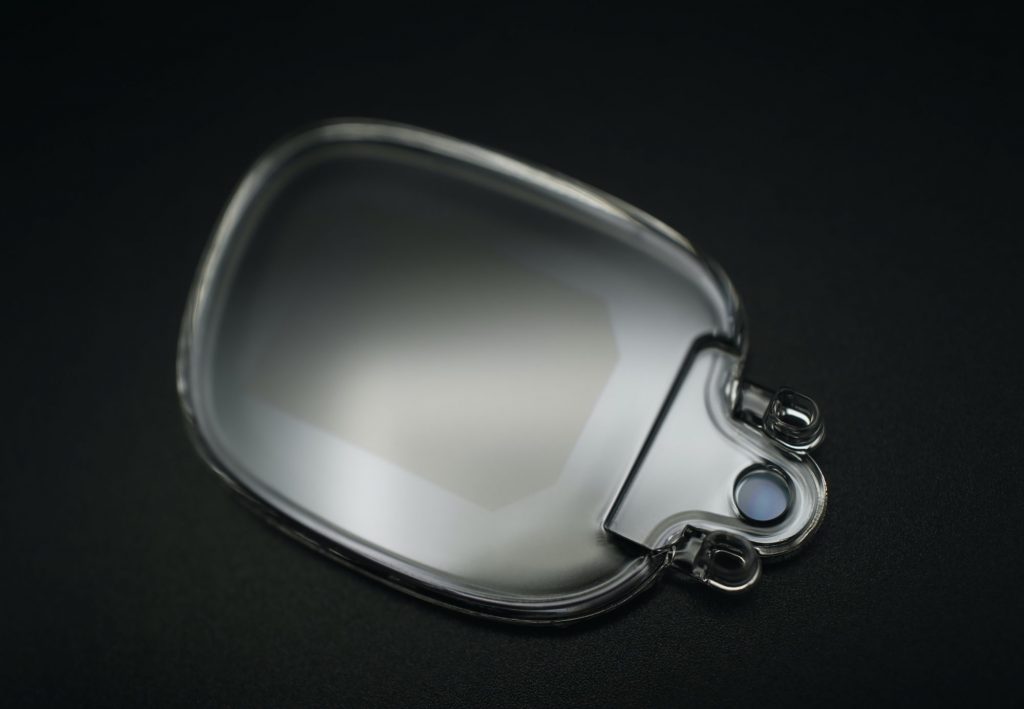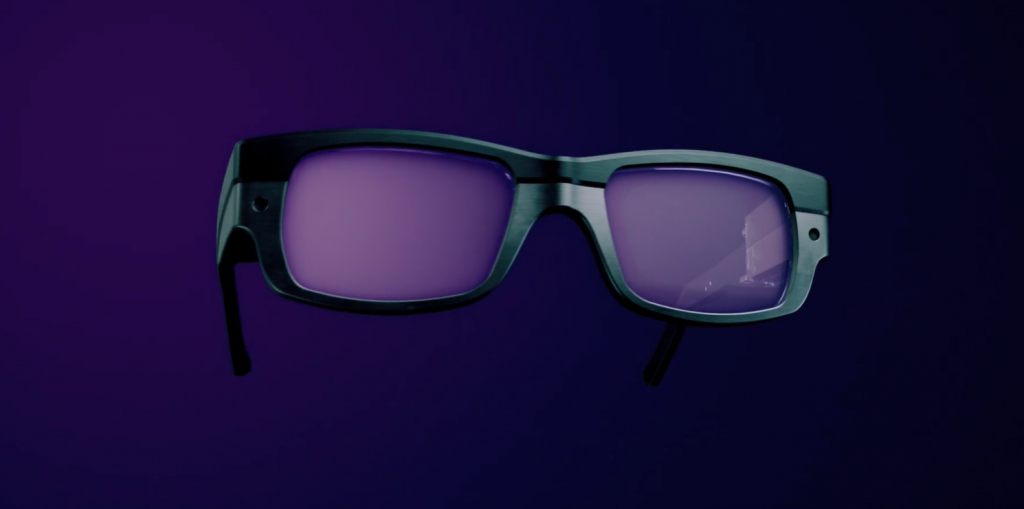Luxexcel, a specialist in 3D printed prescription lenses, has partnered with waveguide manufacturer WaveOptics to 3D print prescription smart glasses with augmented reality (AR) functionality.
Following a teaser announcement last year, the partners are set to produce standardized lens modules which can be used by other smart eyewear manufacturers to create end-use devices. Combining Luxexcel’s 3D printing technology with WaveOptics’ waveguides and light projectors, the lens modules provide both corrective vision and AR in a normal form factor, meaning they can be integrated into conventional eyewear frames. A prototype of the module will be showcased at the SPIE AR, VR, MR conference in March, with samples being made available to customers from Q2 2021.
Guido Groet, Chief Strategy Officer at Luxexcel, says, “About 70% of the adult world population today need vision correction to see their best. Providing consumers with a single device that integrates both their prescription requirements, as well as smart technologies from leaders such as WaveOptics, is a prerequisite in enabling the adoption of smart glasses by the mass consumer market.”

Combining practicality and futurism
Manufactured using Luxexcel’s proprietary 3D printing process, the curved prescription lenses will feature a fully functional waveguide encapsulated within. The waveguide, together with a projector, will be able to deliver high-quality AR images visible only to the wearer, and will remain flat in the curved lens due to an air gap created during the printing process. The lens will also allow for a precise mounting for the projector to ensure an excellent alignment when assembled into the final product.
Groet adds, “The combined strengths of the partnership: Luxexcel’s 3D printing platform and WaveOptics’ waveguides, create Augmented Reality prescription eyewear that everyone has been waiting for.”
Luxexcel states that the integration of the waveguide directly into the lens has resulted in an overall weight reduction of around 50% when compared to legacy lenses, as the eyewear is made to be thinner without sacrificing performance. Once 3D printed, the internal electronics are completely sealed off, meaning the lens modules are also dust and waterproof.
Phil Greenhalgh, CTO at WaveOptics, explains, “The combination of WaveOptics’ Katana waveguide, the thinnest and lightest waveguide on the market today, with the complete encapsulation provided by Luxexcel’s printed lenses creates an incredibly compact and robust solution that will withstand real-world use.”

Highly-customized prescription AR
The lens modules’ key components, including the prescription level, can all be completely customized on a product-by-product basis. Luxexcel’s 3D printing technology also lends itself quite well to high-volume production, meaning the partners’ customers will be able to scale their products to meet the demands of the consumer market.
Greenhalgh concludes, “This partnership provides a solution for two of the major product planning challenges all of our customers face: how to address prescription accommodation and delivering a robust waveguide in a form factor that can go into a consumer product.”
Luxexcel very recently announced that it had 3D printed over 50,000 prescription lenses using its proprietary VisionPlatform fabrication process. The figure represents a significant milestone for the company as it demonstrates both the stability and scalability of the technology. The company has also previously partnered with non-profit organization IFB Solutions to provide free 3D printed prescription eyewear for seventeen school children in Winston-Salem, North Carolina.
Subscribe to the 3D Printing Industry newsletter for the latest news in additive manufacturing. You can also stay connected by following us on Twitter and liking us on Facebook.
Looking for a career in additive manufacturing? Visit 3D Printing Jobs for a selection of roles in the industry.
Featured image shows a rendering of the 3D printed lenses in a frame. Image via WaveOptics.



